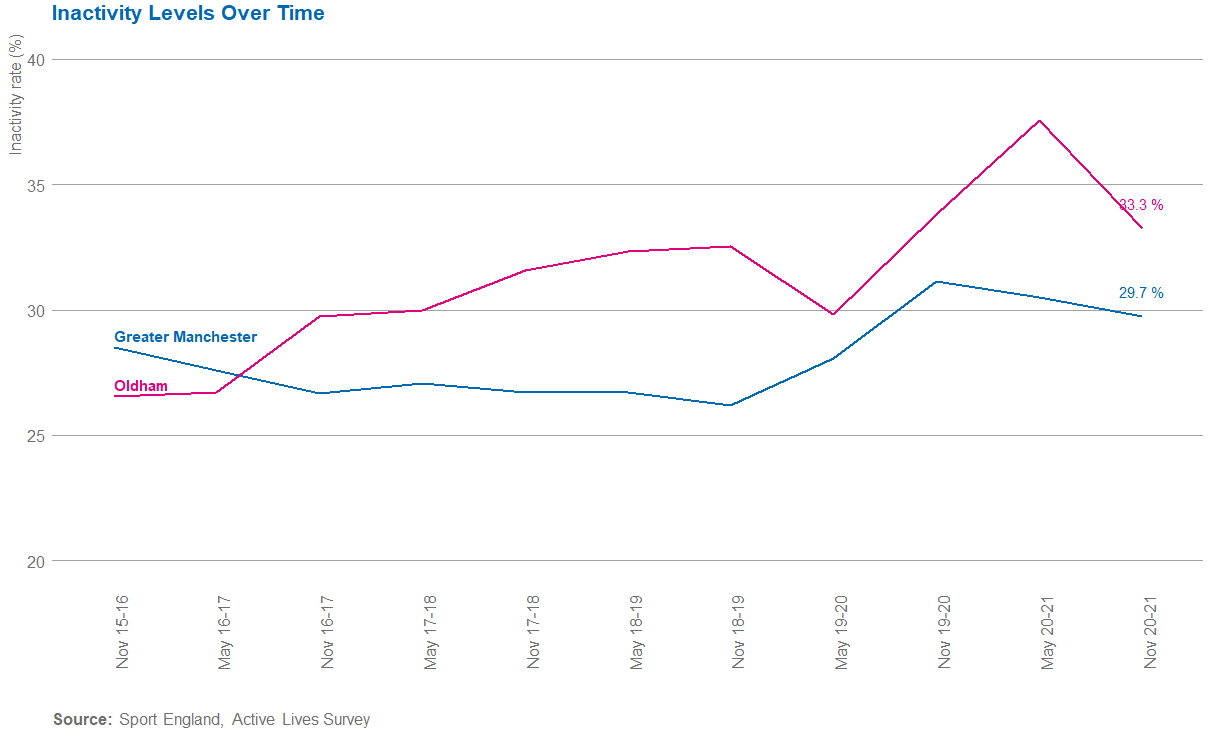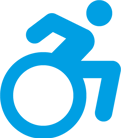Oldham Adult Activity Levels Nov 2020-21
The latest Active Lives results published by Sport England show that 66.7% of adults in Oldham are active for at least 30 minutes a week, equating to 123,000 adults moving; an increase of 1,400 from the survey 12 months ago.
Oldham Overview
66.7% of adults in Oldham are now moving (active and fairly active), this equates to 123,000 adults. Since Active Lives launched, November 2015-16, inactivity in Oldham has increased by 6.7%, meanwhile in Greater Manchester the rate has increased by 1.2%, in the last 12 months it has decreased by 0.6% in Oldham.

Demographic data
 |
The inactivity gender gap in Oldham is 0.3%Since November 15/16 the gender gap has decreased by 2.4%, however, the gap has inverted with men previously more inactive than women. This change is due to a larger increase in inactivity amongst women (+7.9%) compared to men (+5.5%). |
 |
The inactivity socio-economic gap in Oldham is 30.9%Since November 15/16 the socio-economic gap has increased by 9.3%. This change is due to a large increase in inactivity amongst lower social groups (+8.9%), NS-SEC 6-8, and a decrease in inactivity amongst higher social groups (-0.4%) NS-SEC 1-2. Learn more about activity levels related to socio-economic status here |
 |
The inactivity disability gap in Oldham is 21.1%Since November 15/16 the disability gap has increased by 3.0%. Inactivity has risen amongst both those with a long term limiting disability and those without. However the rate of increase has been greater amongst those with a long term limiting disability (+9.1%) than in those without a long term limiting disability (+6.1%). Learn more about activity levels related to disability and long term health conditions here |
 |
The inactivity age gap in Oldham is 25.9%Since May 16/17 the age gap has decreased by 1.0%. This is a result of similar increases in inactivity amongst over 75's (+10.2%) and 16 to 34 year olds (+11.1%). |
 |
EthnicityDue to limited sample sizes we have limited ethnicity data across the Greater Manchester boroughs. In Oldham 32.2% of those from a White British background are inactive compared to 40.8% of South Asians. |
If you have questions about this data please email: [email protected]
Published April 2022
